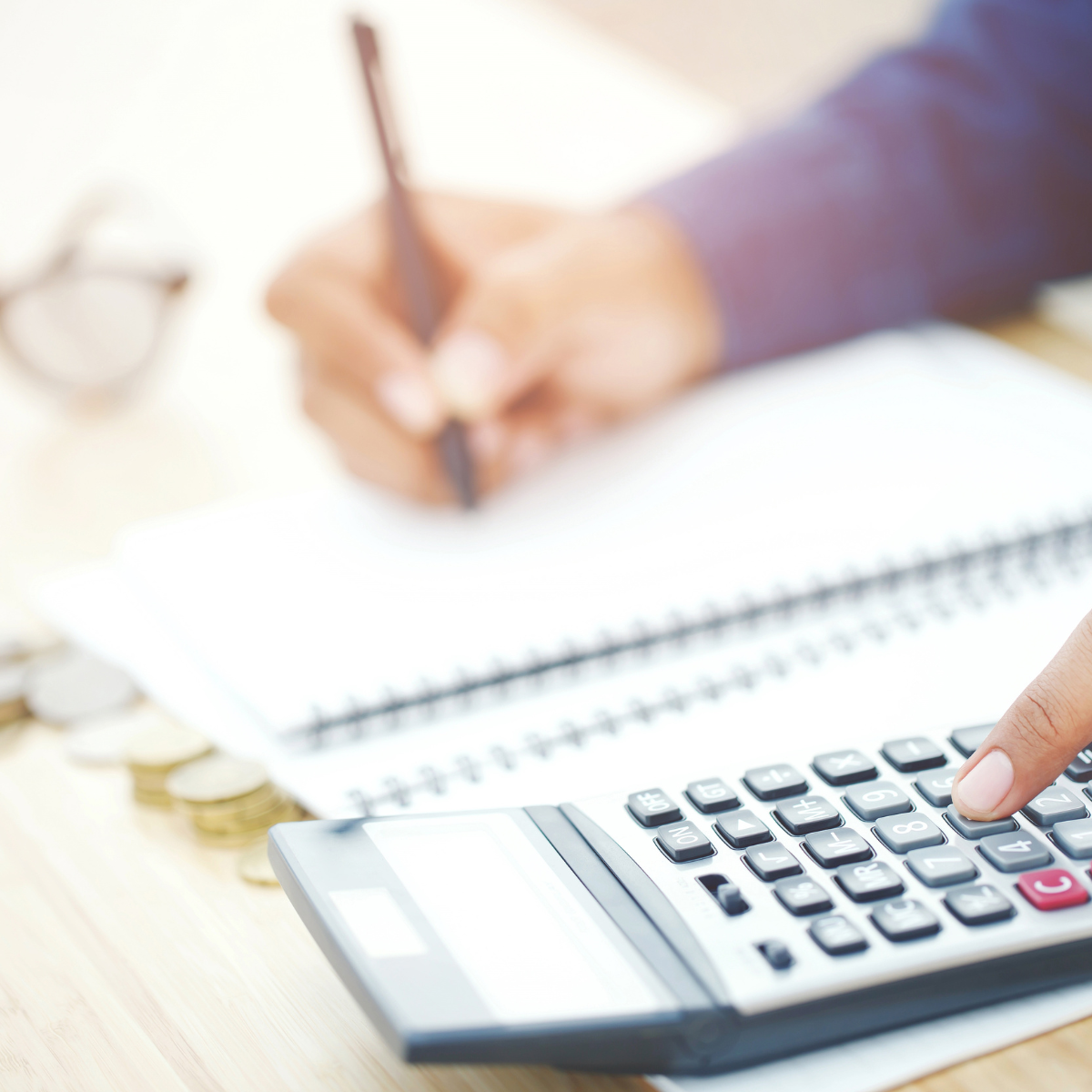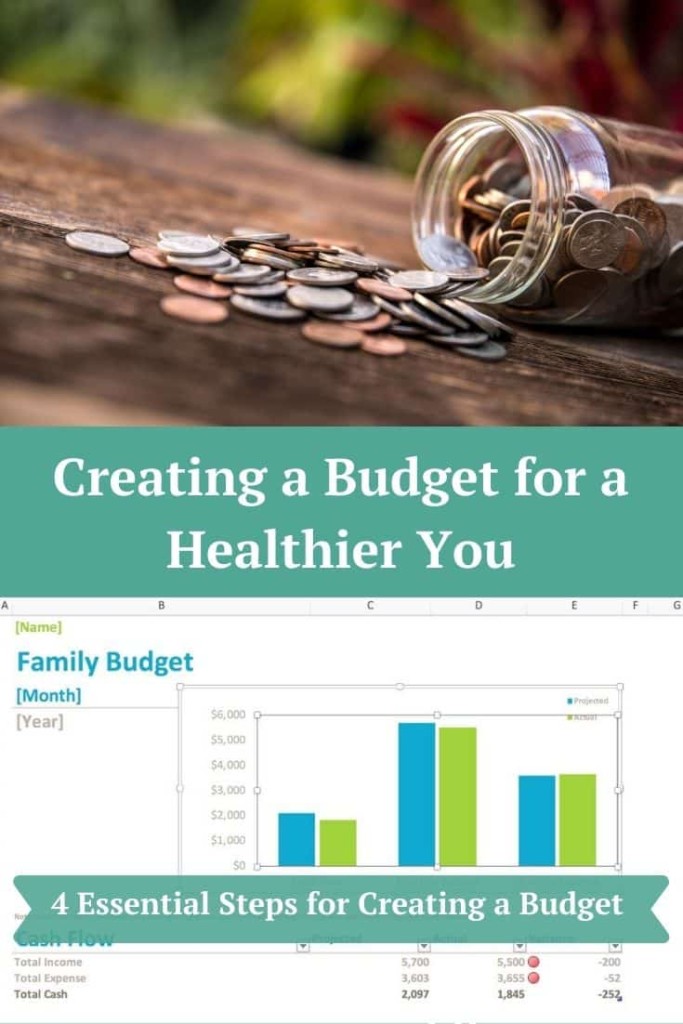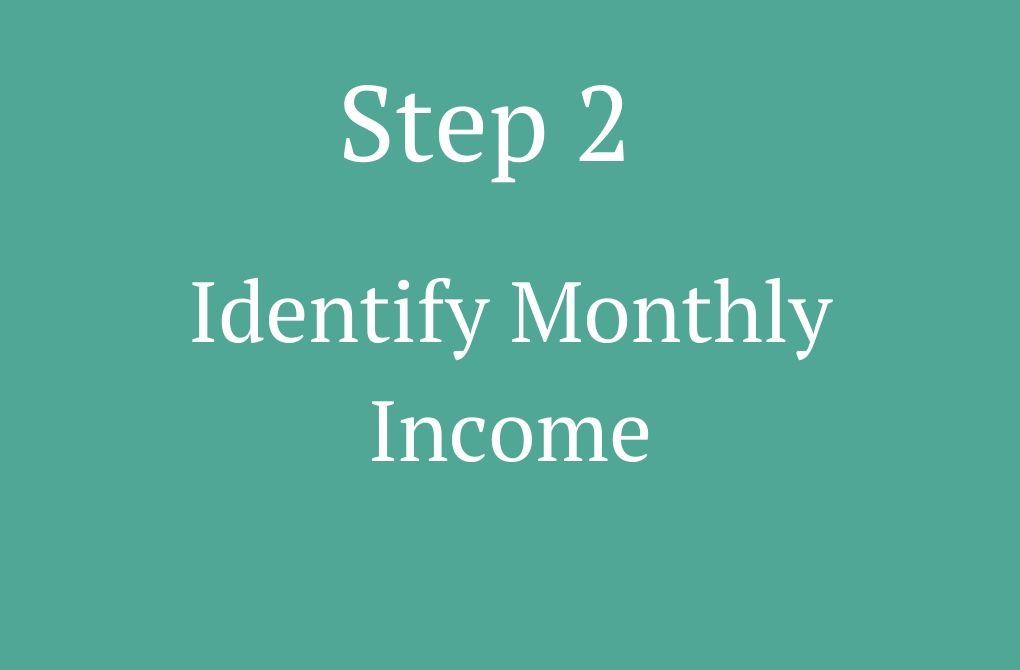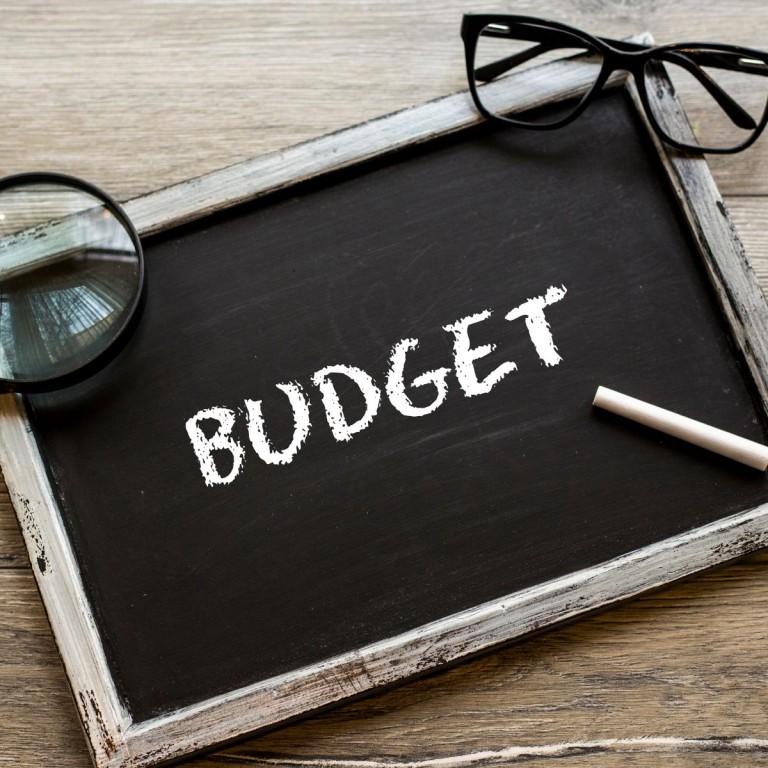Creating a Budget for a Healthier You

4 Essential Steps to Creating a Budget
(Updated December 2020)
Creating a budget is like doing exercises that aren’t necessarily your favorites. It may not be the most fun, but it is necessary for your overall health and wellbeing. On the other hand, chronic stress is not good for our health. According to the American Psychological Association’s Stress in America 2020 report, about 64 percent of us say that money is a significant source of stress, especially after the year we’ve just had. That’s why creating a budget (or as money expert Ellen Rogin prefers to call it “A values-based spending plan”) is so important. It lets us take control of our finances and in many ways, our health, our wellbeing and our future.

I know all of this firsthand. As someone who started out early adulthood in major debt, I quickly realized that was not a place where I wanted to stay. My husband and I began developing a budget at the beginning of every year, and we’ve stuck with that habit. It has impacted everything. On very modest incomes, we were able to pay off the debt within a few years and start an emergency fund. This fund has saved us repeatedly from having to take out loans for emergency-type expenses or put them on a credit card. Yes, life happens, but you can have a great deal of control over how prepared you are for it. That’s why I wanted to share with you the 4 essential steps for creating a budget that have worked for us that will help reduce stress and foster your dreams, your reality and your health.

Identify a Budgeting Tool
Identifying a budgeting tool that works for you is a must. You can simply use a good old-fashioned notepad (we did this for many years), but it is certainly helpful to have something that will at the very least automatically do the math for you. That way you’re not spending valuable time repeatedly adding and subtracting the same numbers.
The most important thing to look for in any tool that you use for creating a budget is that it lets you add and remove lines to fit your needs. It also needs to be able to recognize what you’ve added as part of its overall formula.
We currently use the basic budgeting spreadsheet included with Excel. It’s simple and easy to use and lets us clearly see how much money we have coming in, how much we’re spending and what the difference is between the two. We do a spreadsheet for every month. This is budgeting at its most basic, but it’s free and it works.
Other good, more comprehensive tools that make it easy to track daily expenses including credit card debt, investments, loans, etc are:
- Quicken Home & Business
- Dave Ramsey’s EveryDollar Budget Tool
- Mint
- You Need a Budget

Identify Monthly Income
I start the process of creating a budget by identifying the income for each month. This lets me see from the beginning what I have to work with. If both you and your spouse or partner work, include each of your monthly incomes on a separate line. If you have any other sources of income – no matter how big or small – add a separate line for them. This lets you see what your regular sources are that you can count on each month as well as what is extra and shouldn’t be relied upon on a regular basis.
You’re going to hear me say this over and over but be as specific as possible. I strongly dislike the term “other.” Be specific. If it’s cash you’ve earned from your credit card, say “credit card cash back.” This lets you track how lucrative those types of programs are and whether you’re using them as much to your advantage as you can (more on that in the next section).

Identify Specific Monthly Expenses
There are some money experts who say that tracking every little expense fosters an attitude of scarcity instead of abundance. That you should focus on broader categories like how you’re investing your money and then you won’t have to worry about tracking every penny that goes out. I get that concept completely, but at the same time, I can tell you that closely tracking the money that is flowing out can make a difference in how it adds up – whether it’s in the positive or negative.
We’ve ended some of what should have been our best financial years with me shaking my head – wondering where it all went and how we didn’t end up in much better shape than we did on some of our tightest years. The challenge that we found is that when we were earning more, we were more prone to not tracking our spending as closely. We were also weren’t as vigilant about making sure that it was going to the places where it would make the most difference in the long-term, such as putting more in savings. Yes, we were more comfortable in not thinking about every cent we spent, but in turn, we also weren’t thinking about how the choices we were making were going to serve us best – both in short-term and for the future.
That’s what creating a budget is all about. Making choices about how your money is going to serve you and your goals as opposed to letting it just flow out with no real purpose. In my opinion, a budget helps to support an attitude of prosperity, not limit it.
Here’s the order that we follow for determining our expenses.
Identify fixed, essential monthly expenses such as housing, food and utilities
You may be thinking that food expenses may fluctuate from month to month. The truth is though that you should have a fairly specific idea of what you need and what you can afford and then STICK WITH IT. If this is a struggle for you, money expert Dave Ramsey suggests getting your monthly or two-week allotment for groceries out in cash and keeping it in a marked envelope. You only spend as much money as you have in the envelope. That’s it. While I don’t currently use this system, I learned it from my grandmother, have used it many times, and it does work.
Identify long-term goals and what you need to put away in savings each year to work toward these goals
These could include building up an emergency fund (you should have 3-6 months of cash to cover living expenses if needed), retirement, paying off debt, saving for college, buying a car and big house projects. Once you’ve determined how much you need to put away each year for each of those goals, divide those amounts by 12 to figure out how much you should set aside each month.
Identify short-term goals such as Christmas, birthdays, vacations and small house projects or maintenance
Friends, Christmas and birthdays come around at the same time every year. They should not sneak up on you, and they shouldn’t catch you by surprise. Plan for them and include them in your budget. If you’re creating your budget in January (highly recommended!), decide how much you can spend for Christmas and divide by 12 to determine how much you need to put away each month. Then Then STICK WITH YOUR HOLIDAY BUDGET when it actually comes time to buy gifts.
Identify any other expenses for the year such as sports for kids, hobbies for you and gym memberships
Again, get as specific as you can, and each type of expense gets its own line. I even include a line for back to school expenses in August, entertainment, clothes shopping, pet expenses, eating out, etc. The more specific that you can be, the more closely you can track how you’re spending your money.
Important notes for identifying expenses
- This process may take several revisions. As you get down to the more flexible expense categories, you can start by including as many specific items as you think will be feasible based on how much money you have left after the essential items and essential long-term goals. Once you see how those costs fit with everything else that you need to do, you can add or delete expenses as necessary.
- If you’re going to use your credit card, pay it off each month. Create a line in your budget for any expense or category of related expenses where you’ve used your card and exactly how much is owed. I mark these with (CC). That way, you still budget for that expense even though it won’t disappear from your bank account until the credit card payment is due. If you are disciplined and follow this way of using a credit card, I think the cash back that you get from some cards is worth it. We get hundreds of dollars in free money every year for purchases that we were making anyway. But we NEVER carry a credit card balance, and we have one primary card that we use. If you don’t think you’ll be able to be that disciplined, DO NOT have a credit card. The interest that they charge is simply not worth it. Unless it’s an emergency, and you don’t have any other cash available to you, putting off a purchase until you can pay for it in cash is always the best way to go.
- If you need to use any of your emergency funds, include in your budget a plan for paying that money back so that you can return your fund to the 3-6 months of covering living expenses as soon as possible.

Make Sure Every Month Balances to Zero
The final step in creating a budget is to make sure that every month balances to zero (income minus expenses = zero). That means that every dollar should have a home within the budget from the outset. Doing this provides a thoughtful framework for making sure that your financial goals for the year are realistic. If flexible dollars need to be moved around as the month progresses to support unexpected costs, that’s fine. Just make sure that the end result is always zero.
In order to do this, you’ll need to regularly update your budget with your actual expenses and use it to guide your decisions. I take 5 minutes every day to do this, but it can also be done on a weekly basis. The main point is that it’s done regularly so that you don’t end up with any unexpected deficits.
Bottom Line on Creating a Budget
Creating a budget doesn’t mean that you won’t have to make choices about how to spend your money, but it will mean that you can have the control of making those choices. Using your money to build the present and future that you want is certainly a much healthier option than stressing over how to dig out of a financial hole.
Disclaimer: The information included in this article is not intended to give specific financial advice. If you need help determining what your long- and short-term financial goals are, please consult a professional financial advisor.







6 Comments